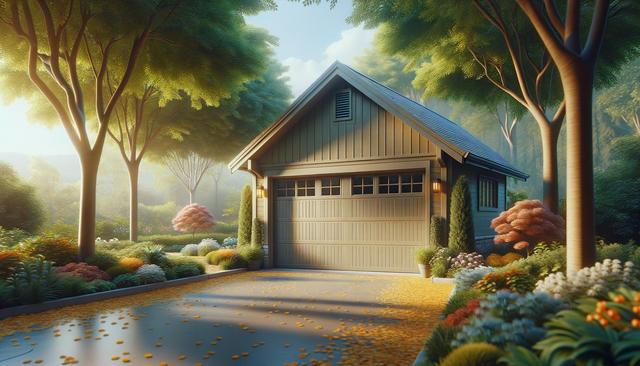Understanding the Purpose of Garage Doors
Garage doors serve as a primary entry point to many homes and businesses, offering security, insulation, and convenience. They are integral in safeguarding vehicles and belongings while also contributing to the overall curb appeal of a property. Whether attached to a home or part of a commercial facility, garage doors can be customized to meet various functional and design needs. The wide variety of styles, materials, and mechanisms available today allows property owners to select garage doors that align with their specific preferences and requirements.
Beyond security, garage doors can enhance energy efficiency. Well-insulated options help regulate temperature, reducing heating and cooling costs. This is particularly beneficial in regions with extreme weather conditions. Additionally, modern garage doors often include features like smart openers, motion sensors, and auto-reverse mechanisms, which contribute to safety and convenience. As technology continues to evolve, garage doors are no longer just barriers but integrated elements of a smart home system.
Types of Garage Doors and Their Mechanisms
Garage doors come in several types, each with unique mechanisms and benefits. The most common types include:
- Sectional Doors – Made of panel sections connected with hinges, they open vertically and slide along tracks.
- Roll-Up Doors – Typically used in commercial settings, they roll into a coil above the opening.
- Side-Hinged Doors – Classic in design, these doors swing open from a hinged frame on either side.
- Tilt-Up Canopy and Tilt-Up Retractable – These open by lifting out and then up, swinging into the garage space.
The choice of door type depends on factors such as available space, intended use, and design preferences. For instance, sectional and roll-up doors are ideal for maximizing space, while side-hinged models offer a traditional aesthetic. Each mechanism has its maintenance needs, and understanding these can help extend the life of the door and ensure consistent performance.
Materials Used in Garage Door Construction
Garage doors are constructed from a variety of materials, each offering different levels of durability, insulation, and visual appeal. Common materials include:
- Steel – Known for strength and low maintenance, often available with insulation.
- Aluminum – Lightweight and resistant to rust, suitable for modern aesthetics.
- Wood – Offers classic charm and natural insulation but requires regular upkeep.
- Fiberglass and Vinyl – Resistant to dents and corrosion, great for coastal areas.
The choice of material impacts not just the appearance but also the performance of the garage door. For example, steel and aluminum are more resistant to weather conditions, while wood doors may require more maintenance to prevent warping or decay. Insulated materials also contribute to energy efficiency, which is a growing concern for environmentally conscious homeowners.
Design Considerations for Aesthetic Appeal
In addition to functionality, garage doors significantly influence the exterior look of a home. Design elements such as color, panel configuration, window inserts, and decorative hardware can complement architectural styles and enhance property value. Today’s market offers a range of customizable options to suit both traditional and contemporary designs.
When selecting a design, it’s important to consider:
- Compatibility with the home’s facade and color scheme
- Window placement for natural light and visual interest
- Hardware finishes that align with exterior fixtures
- Panel styles that reflect the overall architectural tone
These elements not only create a cohesive visual effect but also allow homeowners to express personal style. Some garage doors even mimic the look of wooden carriage houses while offering the durability of steel or composite materials. The right design can transform a utilitarian feature into a standout element of the home’s exterior.
Maintenance and Longevity of Garage Doors
Proper maintenance is essential to ensure the longevity and safe operation of a garage door. Regular inspections, lubrication of moving parts, and timely repairs help prevent costly breakdowns. Common maintenance tasks include:
- Checking and tightening hardware such as bolts and brackets
- Lubricating rollers, springs, and hinges
- Inspecting weather seals for wear and replacing when necessary
- Testing auto-reverse safety features and sensor alignment
Neglecting routine maintenance can lead to issues like misaligned tracks, broken springs, or malfunctioning openers. It’s recommended to schedule professional inspections annually, especially for doors with complex mechanisms. Additionally, cleaning the door surface and repainting when needed helps preserve its appearance and protect against environmental damage. With proper care, most garage doors can last 15 to 30 years, depending on the material and usage frequency.
Conclusion: Choosing a Garage Door That Fits Your Needs
Garage doors are more than just functional barriers—they are key components of a property’s design, security, and efficiency. Whether for residential or commercial use, selecting the right type, material, and design can make a significant difference in both performance and visual appeal. By understanding the various options and committing to regular maintenance, property owners can ensure their garage doors offer lasting value and reliability. Taking the time to explore these elements allows for an informed decision that supports both aesthetic goals and practical needs.




Leave a Reply